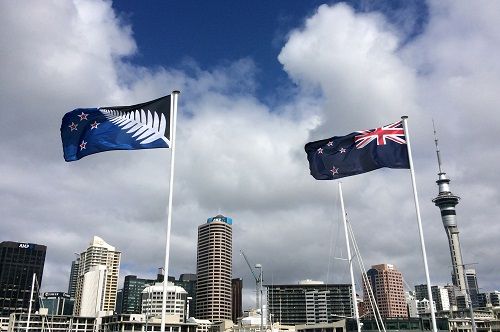New Zealand’s central bank has reduced its benchmark interest rate for the fourth consecutive time, lowering it by 50 basis points to 3.75% on Wednesday.
The move, which aligns with economists’ expectations, is aimed at stimulating economic growth amid easing inflation.
This marks the lowest policy rate since November 2022.
In its monetary policy statement, the Reserve Bank of New Zealand (RBNZ) cited stable inflation within its 1%-3% target range as a key factor behind the decision.
New Zealand’s inflation rate stood at 2.2% in the fourth quarter of 2024, with price growth declining in seven of the last eight quarters, according to LSEG data.
Meanwhile, the country’s GDP has contracted on a year-on-year basis for five consecutive quarters through September 2024, signaling persistent economic challenges.
Following the rate cut, the New Zealand dollar strengthened by 0.4%, trading at 0.568 against the US dollar.
Despite current economic headwinds, RBNZ remains optimistic about recovery prospects in 2025.
“Lower interest rates will encourage spending, although elevated global economic uncertainty is expected to weigh on business investment decisions,” the central bank stated.
However, RBNZ also warned of near-term inflation volatility, citing currency depreciation and rising fuel prices as potential risks.
The bank noted that the impact of global trade policy shifts on inflation remains uncertain.
If economic conditions evolve as anticipated, RBNZ signaled the possibility of further rate cuts in 2025 to support growth.
On Tuesday, neighboring country Australia’s central bank also lowered its benchmark rate for the first time in over four years.
The Reserve Bank of Australia (RBA) cut its cash rate to 4.10%, citing progress on controlling inflation but remaining cautious about further easing.
The latest consumer price index (CPI) data showed Australia’s inflation slowed to 2.4% in the December quarter, within the central bank’s 2-3% target range.
“While today’s policy decision recognizes the welcome progress on inflation, the Board remains cautious on prospects for further policy easing,” the RBA said in a statement.
Despite the rate cut, the Australian job market remains strong, with unemployment hovering around 4.0% in December.
This resilience, along with concerns over sluggish household spending, may influence future rate decisions.
“There are notable uncertainties about the outlook for domestic economic activity and inflation. The central projection is for growth in household consumption to increase as income growth rises. But there is a risk that any pick-up in consumption is slower than expected,” RBA said.
The post New Zealand’s central bank (RBNZ) cuts rates for the fourth time in a row appeared first on Invezz

